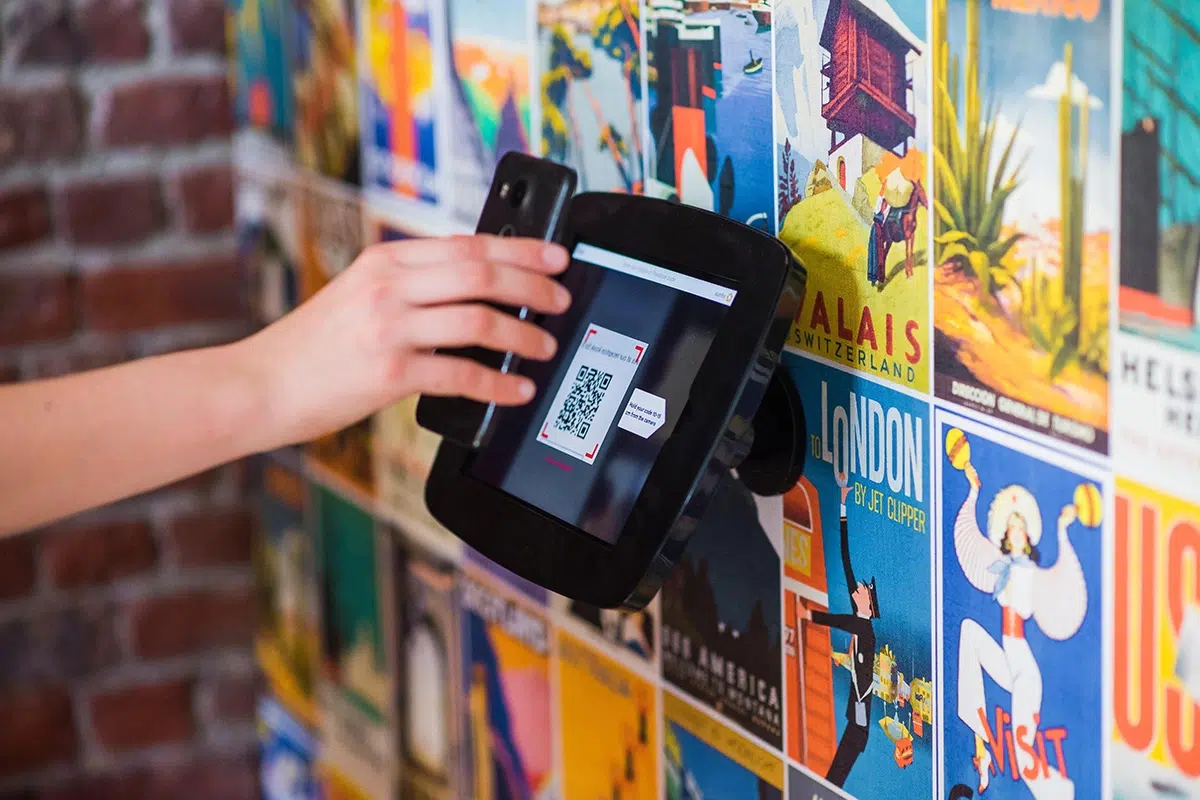The emergence of self-service kiosks in restaurants has experienced solid and steady growth in the U.S., especially at quick-serve restaurants.
The market for self-service kiosks continues to grow well into 2022 and beyond. Self-service kiosks are expected to rise at a compound rate of 6.4% from 2021 to 2026 simply because of their convenience and cost savings for restaurant owners.
A self-service kiosk, or self-ordering kiosk, is a customer-facing device that allows guests to place orders and make payments without interacting with a server or cashier.
Customers can select what they want via a touch-screen and make their payment through a credit card reader or devices like Apple Pay or Google Pay. If the restaurant offers them, guests can even apply loyalty program points during their ordering process.
Most of the larger QSRs with self-service kiosks have the large-screen format, but some fast-casual restaurants have smaller tabletop tablet versions at each table.
The large-screen and smaller kiosks function similarly to order and pay at the device.
The Growing Trend of Self-Service Kiosks
While originally installed for accessibility, restaurant owners found a host of valuable benefits as a result. Consumers are also finding it easier to make their orders on touch screens than relaying orders to a server or cashier.
Below we’ve outlined some of the benefits of self-service kiosks in restaurants.
Increased Order Size
A recent Stratix eBook notes that studies have shown the average check from a self-service kiosk is 15-30% higher than an order placed at the counter.
Customers enjoy the experience so much that restaurants see more profitable results. According to Nation’s Restaurant News, one company sees more customers using kiosks while the average check size jumps from $17.50 to $19.60.
Why the jump? Guests can spend more time in front of the screen than the server or cashier resulting in more options. Also, the kiosks can visually remind customers of special promotions or offers.
Improved Order Accuracy
One of the most significant benefits of self-service kiosks is ensuring accurate orders. Because guests don’t have to rely on an employee to process their order, they can be confident that the food they get is exactly what they want.
Another advantage of self-ordering kiosks is that they remove any confusion or uncertainty regarding the menu options. Guests simply select what they want and then proceed to the checkout process.
Self-service kiosks are proven to reduce lost sales through comps and voids due to inaccurate orders.
Reduced Labor Costs and Staffing
With 2021’s “Great Resignation,” many workers left their jobs for a better work-life balance; many of those quitting came from restaurants.
It leaves owners short-handed, but that’s where technology and self-service kiosks can play a big role. In this case, technology isn’t forcing owners to let staff go but making up for those who left.
When customers use and pay on self-service kiosks, they can now allocate the time they previously spent taking orders to provide better and more accurate service while reducing transaction costs.
Reduced Wait Times
This is a huge reason. With self-service kiosks, customers no longer have to wait in that single-file line in front of the cashier at the counter.
QSR magazine shares that 45% of people who wait in line for more than 5 minutes give up and leave. Another 45 percent say they feel the wait time is longer if they order in person.
Plus, some customers in line may have questions about dietary needs, and that interaction with a server may lead to additional time. With a self-service kiosk, your restaurant can apply nutritional information on the screen.
For restaurant owners, the reduced wait times mean more customers are served quicker, creating a faster turnover and more sales.
Modernize and Improve the Customer Experience
Customers may shy away from using a self-service kiosk, yet the easy interface. For the most part, it’s not too different from navigating a web page or app on a phone.
For that, it makes it a familiar experience for the customer. As many as 60% of Millennials prefer using kiosks to order.
Not only do kiosks free up time for staff members, but it allows servers to enhance the customer experience by engaging with customers.
With self-service kiosks, customers get instant access to service, and staff gets tools to provide individualized service to multiple customers at one time.
Going a step further, restaurants can offer online ordering and customers can skip the drive-thru line by coming into the store, checking in with a kiosk, and picking up their order through a food locker.
Builds Stronger Customer Safety
When a customer is ordering and paying on a self-service kiosk, it makes the user experience almost entirely contactless, which is a safety concern for many.
As customers return to restaurants, there is an increasing demand for contactless technology. In 2020, as many as 88% of restaurants planned digital technology for ordering and payments.
What to Look for in Self-Service Kiosks
Restaurants and their customers benefit from kiosks, but shopping for one may not be as simple as it seems.
Rather than install a completely new POS system with kiosks, there are options where restaurant chains can acquire the cloud-based devices and have them integrate with their current POS system, which is more economical.
And for owners, it’s a matter of how their restaurant functions and what they prefer. Traditionally, for QSRs and fast-casuals, setting up a couple of large-screen or small-screen kiosks at the front of the store may be the way to go.
Small screen kiosks at each table will work best for restaurants known for being sit-down establishments.
With orders that go directly to the kitchen, this system would allow you to connect the front end and back end of your restaurant.
If you’re considering a restaurant kiosk, the following are some key features to consider:
Menu Building: The kiosk should create visually appealing menus that include photos of each item and descriptive information about the foods on what the menu item has and dietary ingredients.
Various Menu Prompts: You should find kiosk software, which allows you to easily add upsell prompts and make menu modifications to increase average check sizes.
Menu Changes: Since your self-service kiosk integrates with your POS system, you can easily make any menu changes you want and reflect at the kiosk.
Loyalty Programs: Kiosks with loyalty solutions can store customer information for future orders or marketing campaigns.
Customer Notifications: One way to increase efficiency is by implementing a system that notifies customers when their orders are ready – either through individual screens or directly through their mobile phones.
Variety Of Payment Options: Contactless payments are increasingly popular with consumers today, so choose a kiosk that supports magstripe, EMV chip cards, and mobile payments such as Apple Pay or Google Pay.
Conclusion
Self-service kiosks allow customers to place their orders without waiting in line. They provide convenience for guests and staff and reduce errors by ensuring everyone knows what they’re ordering.
Kiosks are typically available in two forms — tabletop and stand-alone units. Tabletop kiosks require less space and standalone kiosks are generally easier to install but need more space.
Self-service kiosks will bring your restaurant into a contactless solution. One report says digital kiosks are an undervalued technology but key to long-term success.
CAKE Self-service Kiosks connect your restaurants with customers in a user-friendly format that will integrate with your POS system. Since orders go directly from the kiosk to the kitchen, customer satisfaction will elevate the speed of the delivery.







